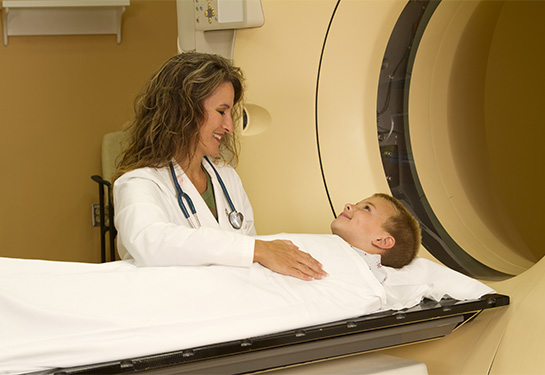Research findings could help children reduce exposure to radiation after cervical spine injury
While cervical spine injuries (CSI) are uncommon in children, they can be potentially devastating. CSIs can result in paralysis or the ability to feel anything in part or most of the body.
Detecting CSIs in a clinical setting often requires imaging such as X-rays and computed tomography (CT) scans. Both expose children to radiation, which is a risk for cancer.
In a study published in The Lancet Child & Adolescent Health, researchers in the Pediatric Emergency Care Applied Research Network (PECARN) created a highly accurate cervical spine injury prediction rule. When applied, the rule decreases the use of CT by more than 50% without missing clinically significant injuries or increasing normal X-ray use.
Nathan Kuppermann, chair of the UC Davis Health Department of Emergency Medicine, was the senior investigator of the study. Leah Tzimenatos served as the site investigator.
Our goal with these rules is to provide clinicians an evidence-based protocol to increase the readiness of emergency departments and ensure that every child receives high-quality and safe emergency care.”—Nathan Kuppermann
“X-rays and CT scans can be useful diagnostic tools for diagnosing and treating patients, but they also have risks of radiation-induced malignancy,” explained Kuppermann. “By validating these evidence-based rules, we hope to decrease unnecessary imaging and consequent radiation on children after trauma for cervical spine injuries and increase patient safety by decreasing the risks of potential malignancies.”
The study was led by Julie Leonard at Nationwide Children’s Hospital and Ohio State University. It involved 18 children’s hospitals, including UC Davis Health, and enrolled more than 22,000 patients over three years. The resulting PECARN CSI prediction rule is easy for physicians to use, relying solely on a child’s symptoms and physical examination findings upon arrival to the emergency department. The prediction rule consists of nine clinical findings. Four of them designate a child as “high-risk” for CSI and appropriate for initial screening with CT.
“Our goal with these rules is to provide clinicians an evidence-based protocol to increase the readiness of emergency departments and ensure that every child receives high-quality and safe emergency care,” Kuppermann added.





